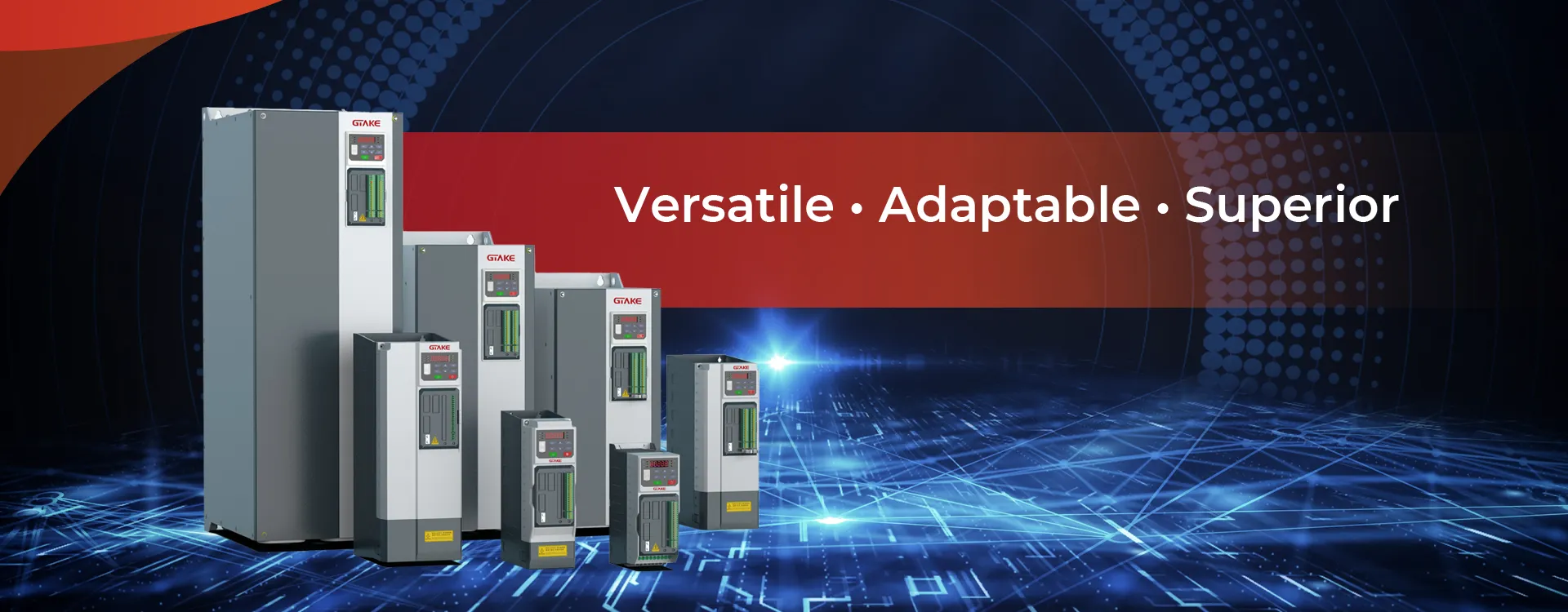
GTAKE specializes in designing and producing innovative AC drives (also known as variable frequency drives), electric vehicle motor controllers, bidirectional DC sources, and test rigs with advanced control algorithms and cutting-edge technology, delivering optimal performance and reliability for industrial automation and new energy applications.
AC Drives, also known as Variable Frequency Drives (VFDs) or Adjustable Speed Drives (ASDs), are electronic devices that control the speed, torque, and direction of an AC motor. They work by adjusting the frequency and voltage of the power supplied to the motor. AC drives are widely used across various industries to improve energy efficiency, enhance process control, and extend the life of motor-driven systems.
In this article, we’ll explore the fundamentals of AC Drives, their benefits, types, and common applications.
An AC Drive adjusts the speed of an AC motor by regulating the frequency of the power supply. The basic working principle can be summarized as follows:
There are several types of AC Drives, each designed to cater to different control needs and application requirements. The most common types are:
Also known as U/F drives, these are the simplest and most basic types of AC Drives. They adjust the motor speed by controlling the ratio between voltage and frequency. V/F drives are commonly used in applications where high precision is not required, such as in pumps, fans, and basic conveyors.
Vector control, also known as Field-Oriented Control (FOC), offers more precise control of the motor’s speed and torque. This drive adjusts not just the frequency and voltage but also the motor’s magnetic field. It is suitable for applications that demand high performance, such as CNC machines, robotics, and industrial automation systems. Vector control drives can deliver consistent torque even at low speeds, providing superior performance over V/F drives.
Sensorless vector control provides many of the benefits of vector control without the need for external position sensors. These drives use algorithms to estimate the motor’s speed and torque characteristics. While not as precise as full vector control, sensorless vector drives offer excellent performance for general industrial applications at a lower cost.
Direct Torque Control (DTC) offers the highest level of performance. DTC drives directly control the motor’s torque and flux, resulting in quick, precise responses. This type of AC drive is used in high-performance applications such as robotics, industrial machinery, and electric vehicles, where ultra-fast and highly accurate motor control is critical.
AC Drives are used in a variety of industrial, commercial, and residential applications. Some of the key sectors that benefit from AC Drives include:
AC Drives are widely used in heating, ventilation, and air conditioning (HVAC) systems. They control the speed of fans and pumps, adjusting motor speed based on load demand to save energy. The ability to control motor speed in real-time leads to more efficient cooling and heating processes.
In water and wastewater treatment plants, AC Drives control the speed of pumps and other equipment. They provide precise control over the flow of water and treatment chemicals, improving operational efficiency and reducing energy costs.
Pumps and compressors are some of the most common applications for AC Drives. By controlling the speed of motors, AC drives ensure that these machines operate at their most efficient point, reducing energy consumption and maintenance costs.
In automated manufacturing systems, AC Drives provide precise control over machinery such as conveyors, mixers, and cranes. These drives allow manufacturers to fine-tune motor performance for optimal throughput and quality.
AC Drives are essential for material handling applications, including elevators, escalators, and conveyor belts. They ensure that motors operate smoothly, with precise speed control, improving the overall efficiency of material handling systems.
AC Drives are used in elevators and escalators to provide smooth, controlled starts and stops, enhancing user comfort and reducing wear on mechanical components. These drives allow for smooth speed transitions and reliable operation.
When selecting an AC Drive, several factors should be taken into account:
AC Drives are a critical component in modern motor control systems. By offering precise speed and torque control, these drives improve energy efficiency, reduce wear and tear on equipment, and enhance overall system performance. Whether used in HVAC systems, industrial automation, or material handling, AC Drives offer significant benefits in terms of cost savings, process optimization, and operational reliability. When choosing an AC Drive, it’s important to consider factors such as motor specifications, application needs, environmental conditions, and energy savings potential to ensure the best fit for your specific requirements.
